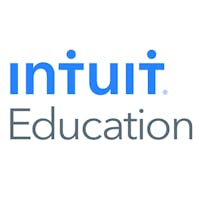“Here's how this lesson is going to apply to a job you may someday have.” These are important words to Jennifer Johnson. Spoken by her favorite university professors, they bridged the gap between classroom theory and workplace reality and went a long way toward preparing her for a 15-year career in accounting.
Not all of her teachers adopted that approach, however, and Johnson recounts moments where she struggled to apply academic theory in her daily work. These experiences eventually prompted her to swap corporate America for the world of higher education—and fulfill a lifelong dream of teaching.
As a senior lecturer at The University of Texas at Dallas, Johnson has created a unique hands-on curriculum for her accounting class—one that echoes the approach of her own favorite teachers, but adds a tech twist. Her students learn theory, then use popular accounting software Quickbooks to practice understanding and applying that theory in real life work scenarios.
EdSurge spoke with Johnson about how she builds confident students while addressing employer needs, her unique approach to innovating curriculum, and her advice for educators who want to bridge theory and practice—in any subject.
What inspired you to become a teacher?
When I was learning about accounting in classes it was all on paper and theoretical. But when I started my first industry job and my boss told me to go make a journal entry and record transactions in the accounting system, I panicked. I’d never done that. I thought ‘What button do I push and what if I mess it up?’
That fear stuck with me. And it’s why I want my students to walk out of here having used an accounting system to make journal entries and knowing they aren’t going to break the system. I want them to have some confidence walking into their first job.
Is there a big gap between what many students learn in school and the actual skills they need to succeed in their careers?
I think there is. In the Dallas Fort Worth area, we have Fortune 100 companies all the way down to small entrepreneurial companies that are starting out. So many people from these companies come to campus looking for students who have experience with accounting software. So teaching classes that focus on how to apply what they are learning really gives them an advantage.
The students' value proposition is: ‘Hey, I already know how to do this. I'm going to be up and running and providing value quickly.’ This is compared to a student that just has all the theory in her head, but hasn't seen it applied in the real world. It's going to take that student longer to get up to speed.
Your approach to teaching accounting is innovative. What goes on during your classes?
In my Survey of Accounting Systems class, students are learning how to use QuickBooks software—but in a way that combines accounting theory and real world practice.
The class is unique because students link their accounting studies with the application of those studies. They learn very specific skills like how to create and use a purchase order. When they actually use the software, then they understand: ‘This is what a purchase order actually looks like. Here's how you create it. Here's how it's used later on to validate payment to a vendor.’ They see the application of the theory that I’m teaching in class.
They also learn big picture things, like how to have an innovative mindset—which is just an ability to adapt to change. This allows them to see how the profession changes, the software changes, the industry changes—and not get stuck in a rut. By using the software—which sometimes updates in the middle of the semester, and doesn't always work the way we think it will—they learn to troubleshoot and adapt to change without getting frustrated.
Then later, in the real world, they're going to be able to figure it out themselves.
Was innovating a new curriculum difficult?
To me, innovating is fun. It's really not hard! I've always loved change. I'm always thinking, ‘What's the next new technology? What is the next skill set my students need to have?’ The past is a great foundation, but we need to get these students ready to be the accountants of the future.
So I do a lot of hands-on learning and talking to students, explaining: ‘Here’s what this scenario is going to look like in the real world’ and ‘here’s what skill set this lesson is going to translate into’ and ‘here's how you might need this technology, this lesson, this feature in your job five years from now.’
Working with Intuit Education made my approach easier. They’re really engaged and supportive, especially when it comes to writing curriculum. They provide the software and the technology to instructors like me as well as students for free. There are resources, such as webinars, updates on software changes and links to textbooks on their website to help instructors learn about the software.
If I needed a person or technology, they helped me find it.
What advice do you have for other educators who want to pair theory with practical applications?
My biggest advice is take one small step at a time.
You don't have to create an entire course around any software. Most software has demo accounts with trial activity and trial data. Maybe spend a week or two introducing it to your class and learning together. You don't have to be an expert.
I will be the first to admit that I don't know everything. Sometimes I create projects where students have to learn the technology and then I learn it from them.
For example, one semester I had students learn specific tasks in the software. Then they had to write instruction manuals and teach the rest of the class how to do that task. We were learning how to use the technology. We were practicing communication. We were practicing their writing skills. Everybody in the class learned something new from the presentations and shared instruction manuals.
When you figure it out together, you don't have to be an expert to implement technology and hands-on learning.



